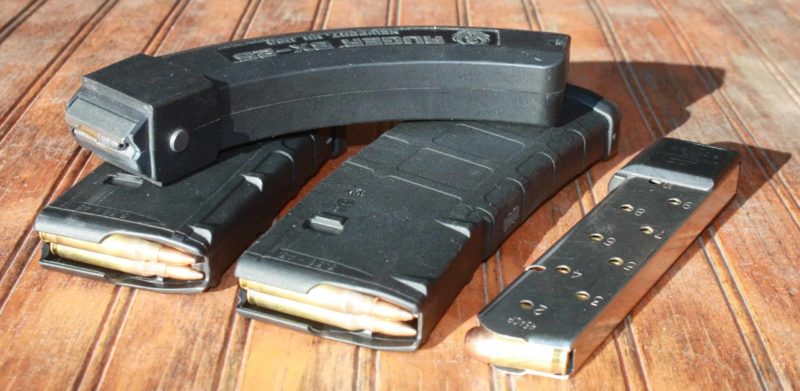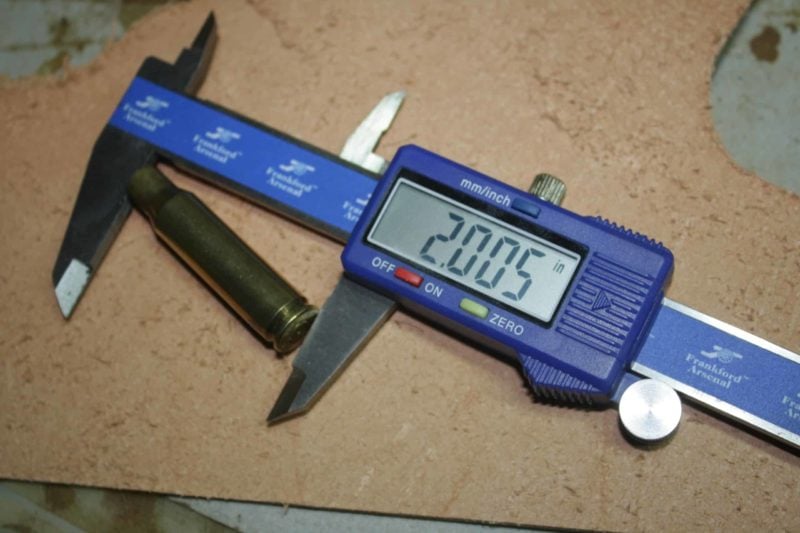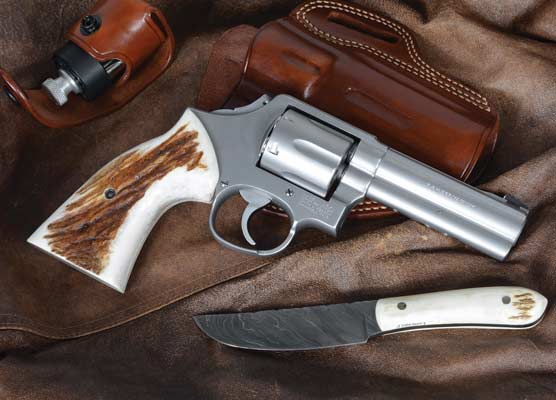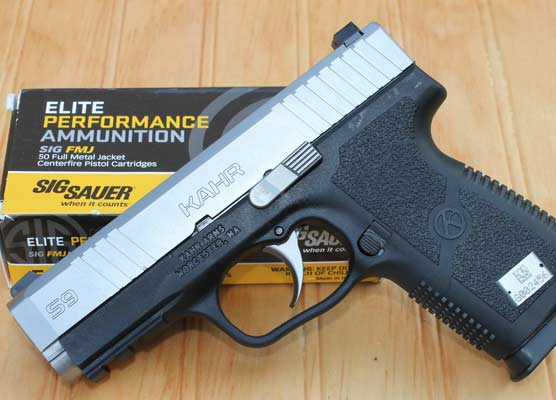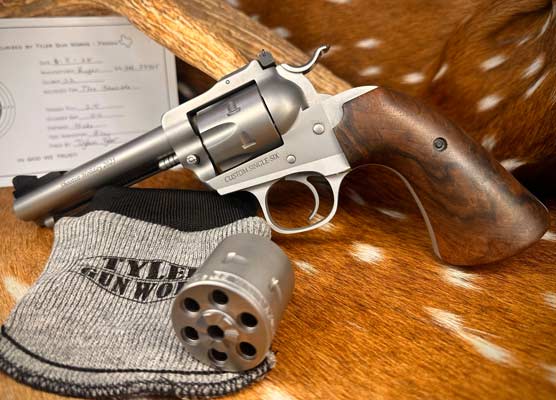Order In The Court
Judges Frustrate Gun Control Crowd
The elections are over, but the dust certainly hasn’t settled on the legal battlefield where gun control has collided with the Second Amendment and the U.S. Supreme Court’s 6-3 ruling in New York State Rifle & Pistol Association v. Bruen.
As Insider reported last time, the Second Amendment Foundation went to bat for a couple of New York State clergymen — Bishop Larry A. Boyd of Buffalo and Rev. Dr. Jimmie Hardaway, Jr., of Niagara Falls — who have been fundamentally disarmed by the state’s new and hastily-manufactured concealed carry law which declared churches to be “sensitive places.”
When SAF and the California-based Firearms Policy Coalition, Inc. filed suit in federal court challenge back on Oct. 13, we noted it, as did the daily firearms news media, but it got very little notice outside of those circles. But then things began to happen.
Four days later, SAF et.al. filed what is called a memorandum in support of their earlier motion for a temporary restraining order against the state’s enforcement of the sensitive places designation for churches. That designation prohibited Bishop Boyd and Rev. Hardaway from packing hardware in their respective places of worship as a means of defending their congregations in the event some nut might try to commit a mass church shooting.
Two years ago, an armed citizen named Jack Wilson, a volunteer member of the security team at the West Freeway Church of Christ in White Settlement, Texas, fatally shot Keith Thomas Kinnunen after the latter opened fire, killing two people. The whole incident was live streamed as part of the service, and Wilson made an extraordinary shot across the church sanctuary, as detailed in a BBC report at the time.
Back in New York, three days after the memorandum was filed, U.S. District Judge John L. Sinatra, Jr., granted the TRO. The swiftness of Sinatra’s smackdown caught SAF’s Alan Gottlieb — and everybody else — by surprise.
New York’s Bum Luck
If there is one thing anybody could say to a Democrat politician in Albany, N.Y. without fear of contradiction right now, it would have to be “It sucks to be you.”
They scrambled to write a more restrictive law for citizens seeking a concealed carry license in the Empire State, and early last month, a federal district judge named Glenn Suddaby struck down several “key elements” of the new law as unconstitutional, as reported by PBS.
Suddaby, a George W. Bush appointee (elections really do matter!) with a sharp pen, included this blistering remark in his ruling: “Simply stated, instead of moving toward becoming a shall-issue jurisdiction, New York State has further entrenched itself as a shall-not-issue jurisdiction. And, by doing so, it has further reduced a first-class constitutional right to bear arms in public for self defense … into a mere request,” the PBS report detailed.
It may not be so much a case of bad luck as it is of bad faith and bad politics. Generations of anti-gun politicians and administrations in Albany have made the current crop of lawmakers stubborn. They simply do not want to let go of the power to squelch, or at least discourage, New York residents from exercising their right to bear arms, according to various critics.
Pols in neighboring New Jersey, down in Maryland and out in California are watching this drama intently because, if the courts continue ruling in the spirit and according to the letter of the high court’s Bruen ruling of last June 23, their efforts will fail as well.
If anything can be said about the Bruen ruling, authored by Associate Justice Clarence Thomas, it would have to be this is the gift that will keep on giving for a very long time. It has thrown the doors open to challenges of gun control laws literally all over the map.
And Then There Is Stubborn
When it comes to stubborn, politicians may not hold a candle to the gun control crowd, which simply cannot stand to lose.
Still, here’s a warning to readers: You’re not gonna believe this!
Out in Washington State, where Gottlieb’s SAF, the Firearms Policy Coalition, a gun retailer and two private citizens are challenging a ban on so-called “large capacity magazines,” a federal judge has given the okay for the Seattle-based Alliance for Gun Responsibility to intervene in that lawsuit … as a defendant. The group’s request was submitted months ago, not long after the law took effect July 1.
The lawsuit names Democrat Attorney General Bob Ferguson and State Patrol Chief John Batiste as defendants. Ferguson had pushed for a magazine ban for several years, and this year he finally scored. The Alliance gun control group threw its weight behind the measure, which was part of its 2022 legislative wish list.
Gottlieb released a statement, which provided an interesting perspective.
“Apparently the Alliance is worried Ferguson isn’t capable of defending his own magazine ban in this lawsuit,” Gottlieb said. “Obviously, after the Supreme Court’s Bruen decision last June, the gun ban lobby fears the state may not be able to defend any of its gun laws, including a couple passed by initiative campaigns the Alliance financed.”
A Very Thoughtful Letter
We get notes occasionally about something we’ve written, but a message from Ken Angst of Nevada — in response to the Oct. 20 “Trim Length” column — was so well-thought-out, it deserves to be printed in full.
“Dave: Have been following your writings for years as you do a great job.
Reference your article “Trim Length,” let me start by saying that I have been reloading since the late 1950s. Started out with an old used Pacific press circa the 1940’s, Lachmiller dies and STP for sizing lube. Have never had a stuck case with STP and still use it for heavy military cases. This was back in the day a one-pound can of 3031 or Unique and Bullseye was $2.50. A 100-pound canister of surplus IMR 4895 was $50.00 plus Railway Express fees. Of Course as a high school kid working part time in a gas station I didn’t have $50.00 plus shipping to buy powder.
I have worked up through a Star press, multiple RCBS press’s (sic) and Dillon progressives along with some electric commercial reloading machines during my law enforcement career. Those were the days of loading thousands of rounds of .38 Spl. at one sitting.
Here are some things that I have learned over the years you may wish to consider. Case length is an issue that can cause serious pressure issues, especially in bottleneck cases, rimmed and rimless. A long case may cause chambering issues but a heavily crimped case may not, “squeezing” the bullet when fired as it enters the bore between the case neck and the barrel throat causing extremely high pressure. In effect the long brass is trying to size the bullet down, acting like the forcing cone in a revolver on the bullet. This is usually not a problem in straight case rimmed pistol cases such as the .38 Spl. or .45 Colt.
The chambers in most revolvers in my experience are reamed a little long. As you mentioned the .45 Colt loads that were “swelled”, that sounds like it was caused during the crimping stage where the brass was forced downward and outward instead of inward because of excessive case length. .44-40 cases have thin walls and you can actually crush a long case or even a correct length case if the crimp does not go into the crimping groove. I have found that the Star Line .44-40 brass is much more rugged than Winchester or later post balloon head Remington brass. There are good case length gauges available semi reasonably priced such as the ones by Wilson or Dillon that drop over the case which give a visual min and Max.
Then there are the autoloading cases such as the 9X19, .40, 10mm and the .45ACP that headspace on the case mouth. Although these do not stretch a lot it may be a good idea to check the overall case length since a long case may prevent the slide from closing.
Around 2010 Winchester marketed a quantity of their “white box” .45 ACP that had cases up to approximately 1/10th of an inch over max case length that would not allow the slide to go into battery. I still run into some of that brass.
To trim or not to trim, that is the question. First, as to your point to always check the case length after they have been sized. That is very important. If I’m about to load a couple thousand 5.56mm or .30-06 rounds, do I want to trim them all to the same length? Even with a Dillon electric or RCBS electric trimmer this is a time consuming PITA project. I have found that most once fired bottle neck cases come out of my sizing dies about .003″ or .004″ inches short of the max overall length recommendations. That may differ from one chamber to the next that they were fired in. When at or over max those cases are set aside to be trimmed later.
One thing that I have found important to ensure quality reloads is to crimp the case last in a separate stage from bullet seating. I have been using the Lee Factory Crimp Die for years now for rifle cases. As the case comes up the crimp is pressed in from the sides the same way factory ammo is manufactured. The closer that the case lengths are to the same, the closer the crimp is to identical on all loads. For a match quality load use the same lot of brass with identical case length and crimp. Have also switched to their pistol crimp dies also and get good results without bulged cases on heavy crimps. This is the one product that Lee excels with.
Closing on 65 years of reloading I have learned things that work well for me. One thing a person new to reloading with straight wall pistol case should give thought to is a carbide sizing die. The few dollars more will be well worth it if they become a serious reloader. One of the best all around loading manuals in my opinion is the NRA Publications “Handloading” circa 1981 & 1986 if you can find one. Great publication for the novice or veteran handloader. Some loads may be out of date however, some of the technical information contained you may not find elsewhere.
Having to pull a couple of hundred rounds is not fun. I once loaded 1,500 plus rounds of 9X19 using the data for Dupont 700X which had been taken over by Hodgdon and produced as IMR 700X which I assumed would be the same. Dumb, dumb, dumb. Load looked to be too hot for the IMR 700X. Not something to shoot in a DWM 1916 Luger. I ended up giving the loads to a friend who spent his afternoons in the garage for weeks with an inertia puller.
Wheel guns, 1911’s and M1 Garands forever.
Dave replies: Ken, you’ve offered a life’s worth of experience at the loading bench, a “gift” to other readers and we’re grateful. I’ve been knocking together my own rounds for the better part of 50 years, and it is a never-ending educational process. Thanks for your longtime attention to my byline, and for your kind remarks.



